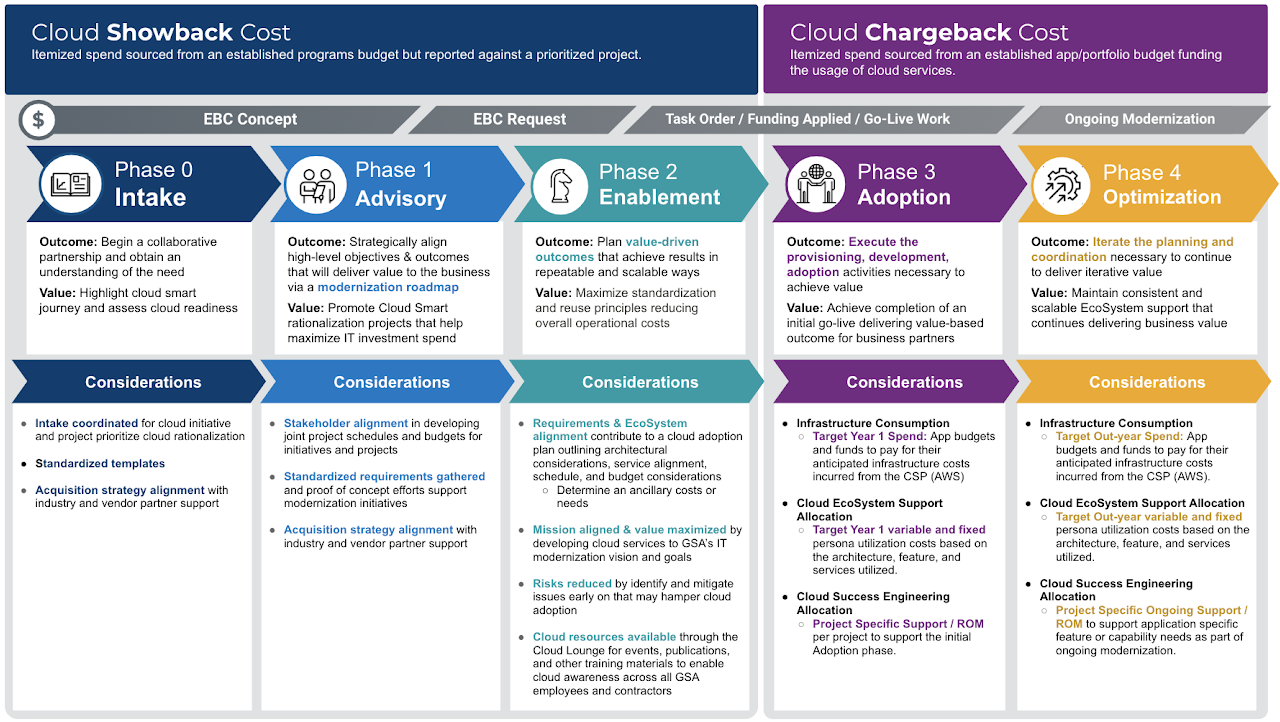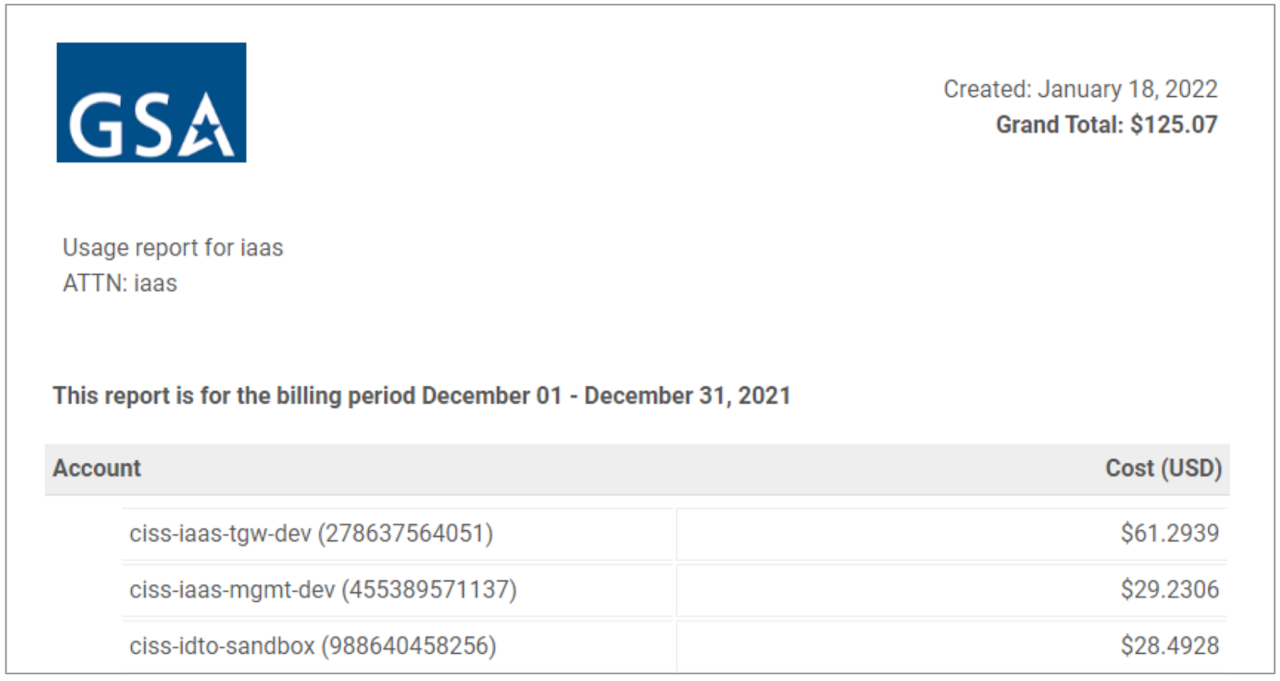Cloud Economics
Cloud economics is the discipline that studies the principles, benefits and costs associated with cloud computing. In every organization, Chief Information Officers (CIOs) are challenged to integrate IT services that provide greater value for their businesses. Therefore they must also define precisely how cloud adoption impacts their IT budget and staffing needs. In evaluating cloud economics, IT leaders and CIOs assess the costs concerning infrastructure, security, support, and research and development (R&D) to conclude if migrating to the cloud is beneficial for their organization.
Cloud Cost Model
Cloud Infrastructure Shared Services (CISS) is publishing its initial cost model (shown below). This model correlates with phases 1-4 of the Cloud Smart Journey and indicates if a phase has showback or chargeback cost implications.

Cloud Consumption Reporting
Cloud Infrastructure Shared Services (CISS) is targeting a multi-phased approach to enhancing capabilities surrounding total cost of ownership (TCO) for cloud tenants. In this model, tenants are first presented with monthly reports that provide insight into their cloud spend. As the process matures, additional capabilities will be released with the focus remaining on enhancing tenant cloud spend awareness and visibility.
Maturity Model
In the depicted maturity model shown below, each phase of maturation is aligned with the Cloud Cost Model above. These areas are detailed below along with projected deliverables, and explanations of each maturity level.

At maturity level one (M-1), the focus is on delivering the existing CSP cost data in tenant-specific reports. These reports will provide tenants with cloud expenditure insights and enables tenants to better understand their TCO.
At maturity level two (M-2), the focus shifts internally to services hosted within GSA and onto the target of delivering similar granular cost data reports that can be isolated to each individual tenant. This data will provide a dramatic shift towards cost transparency and prove invaluable to understanding TCO.
At maturity level three (M-3), the focus will be on more accurately tracking the data generated by success engineering efforts for each tenant, bringing that data into reports to provide a more holistic view of TCO, and giving tenants the information they need to better understand their return on investment.
Cloud Economics Enhancements
Learn more about new and upcoming economics enhancements!
Right-Size Reports
Cost Optimization Opportunities
Right-size reports are monthly reports that provide customers cost optimization recommendations based on automated checks that are evaluated on a weekly basis - providing tenants with an actionable list of potential waste within their cloud deployments.

Cloud Usage Alerts
Each month, tenants may receive a Cloud Usage Alert for the current month's usage.
This alert will trigger when the 'budgeted' amount has been exceeded by the actual cloud consumption for the accounts associated with a tenant's project or program.
By default this amount has been set to $1, if an alert is received with an 'Alert Threshold' of $1, tenants should reach out to their Cloud Advocate to appropriately configure this amount for your project or program

Cloud Usage Reports
Tenants will receive a Cloud Usage Report by the 15th of each month for the previous month's usage. This report will show the overall cloud spend for each account associated with a tenant's project or program.
Tenants should contact their Cloud Advocate to adjust the recipients or reach out with concerns or questions about the report.


